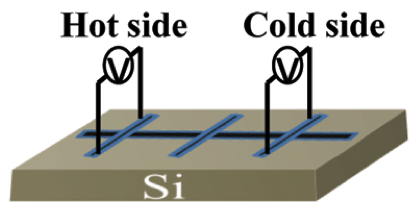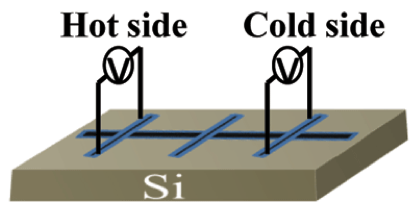Thermal Spintronics on a Firm Footing
In the spin-Seebeck effect, a thermal gradient generates a spin current. The recent discovery of this effect has pushed the discipline of “spin caloritronics” into the spotlight, and has opened up a new route of exploiting the spin dimension in electronic transport. The spin-Seebeck effect has been observed in ferromagnetic metals, semiconductors as well as insulators. However, complexities emerge when the effect occurs in a film that sits on top of a substrate, with several studies suggesting that the observed spin effects may be a consequence of the thermodynamics of the substrate.
Writing in Physical Review Letters, Ssu-Yen Huang at Johns Hopkins University, Maryland, and collaborators report their efforts to isolate the potential effects of the substrate. The group studies patterned Permalloy ferromagnetic thin films on silicon, in which they observe an asymmetric spin dependence that they ascribe to an out-of-plane temperature gradient from the substrate, which overpowers the in-plane temperature gradient. However, when turning to suspended Permalloy foils, without a substrate, the team is able to observe the intrinsic spin-dependent thermal transport. The effect is sensitive to magnetic fields, which is promising for eventual applications. For now, it is significant enough to say that these results highlight that care must be taken to either isolate the sample or compensate for the out-of-plane temperature gradient from the substrate. – Daniel Ucko





